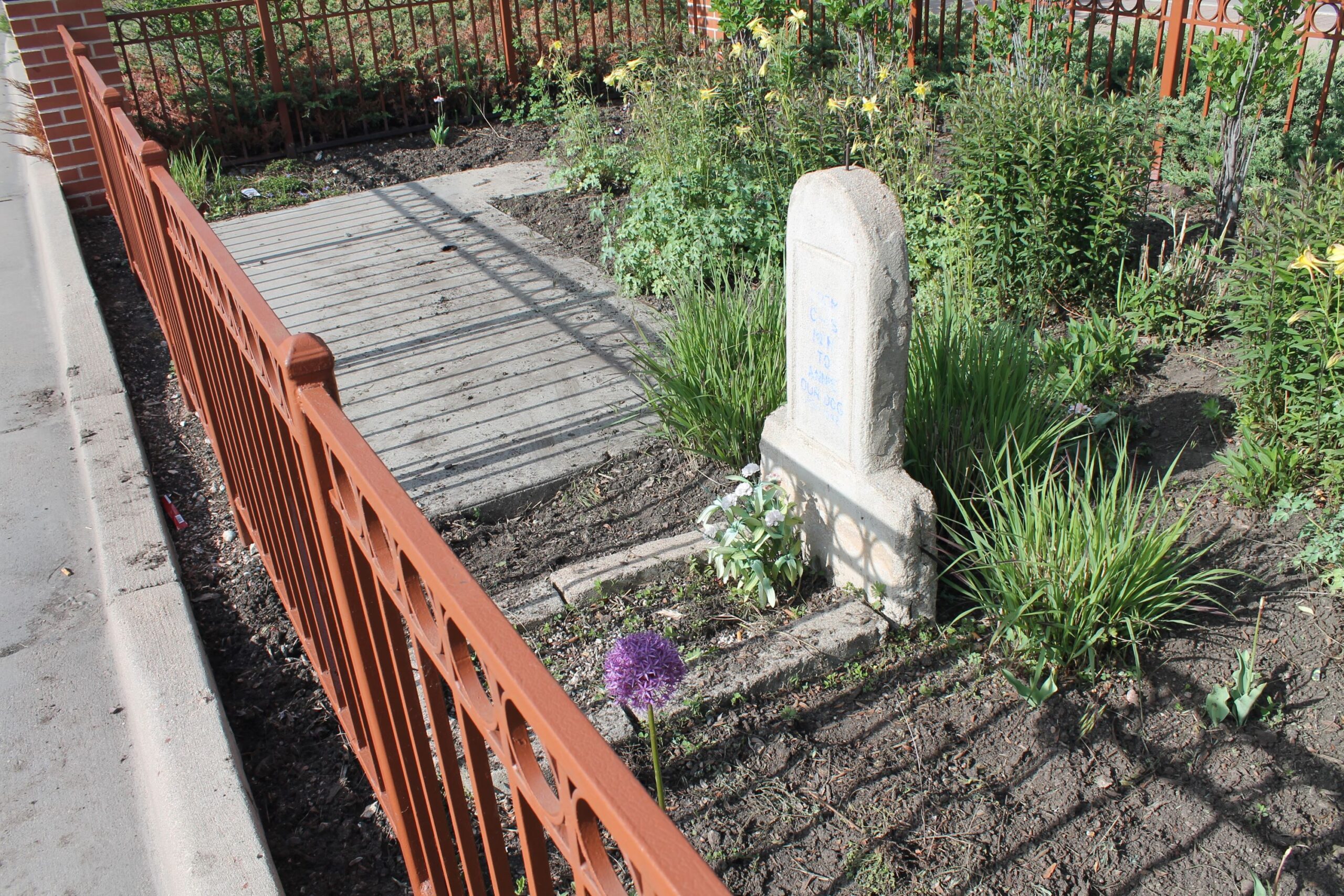With support from the City’s Nature in the City and Xeriscape Incentive Program, Transfort and Community Development & Neighborhood Services are restoring Annie the Railroad Dog’s historic grave and garden and the stormwater basin at the Downtown Transit Center.
Annie the Railroad Dog
Long before Transfort buses were rolling through the Downtown Transit Center (DTC), the Colorado & Southern (C & S) Freight depot, built in 1906, served as the transportation hub for the region.
In 1934, C & S crew members found a sick, pregnant dog at a blacksmith shop in Timnath. They brought her to Fort Collins, nursed her back to health and found homes for all her puppies. The C & S crew members named her Annie and she became known as “the railroad dog,” greeting trains and people daily until her death in 1948. The railway crew buried her next to the depot and made a headstone to mark the grave. Annie’s gravesite was incorporated into the site plan when Transfort took over the space in 2001.
Over the years, the gravesite has become rundown and overgrown with weeds. Now all of that is about to change as multiple City departments come together to refresh and restore the site where Annie is buried at DTC!
Annie’s garden has been converted to a drip irrigation system and within the next two months, it will be planted with native, pollinator-friendly plants. Neither Annie nor her headstone are being moved. The plaque commemorating Annie that had been installed on the east side of the fencing has been removed and will be reinstalled on the west side to provide easier access for the community.
Fun Fact! In 2005, a mayoral proclamation declared August 27 as Annie the Railroad Dog Day, a testament to the love and dedication she inspired in those who knew her.
Stormwater Basin
The stormwater basin just to the north of the transit center has already received three new trees with dedicated irrigation and new sprinkler heads to reduce water usage. Work will soon begin to spray off the existing turfgrass so the area can be reseeded with native, prairie seed mixes designed to support wildlife and pollinator species. Later this fall, live plants will also be installed to enhance visual interest.
The goal of both projects is to reduce overall water usage, demonstrate various methods for installing native and naturalistic plant palates and to showcase how underutilized areas can be restored using native, low-water use species.
More information about both projects can be found on the project website.
Nature in the City funds city-driven projects such as this one, as well as community-driven projects through a competitive grant. Learn more about the grants on the Nature in the City website.

